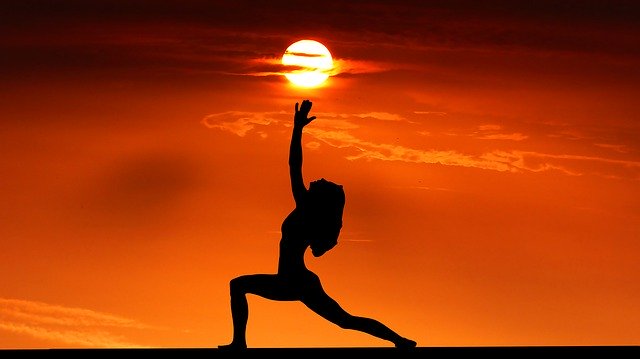
Surya Namaskar (Sun Salutation) is a practice of Yoga. Here, Surya means Sun and Namaskar is an ancient Indian ritual of greeting or salutation. In general, Surya Namaskar is a practice or exercise that incorporates 12 different postures. According to many, it was firstly recorded in the 20th century. However, there are many mentions that it was used in India before the 20th century and for a very long time.
In Vedic Astrology, Sun is the source of energy, warmth. Also, it represents power, authority, and position. Additionally, it governs health, physical strength, authoritative capacity, leadership quality and father, fatherly figures and grandchildren.
It is the Karaka of one’s business or profession running smoothly. With a strong position of Sun in Birth Chart, a person is blessed with great leadership qualities, a healthy relationship with their father and smooth career. As a matter of fact, Surya Namaskar helps in strengthening the position of the Sun in one’s life.
In addition, the physical benefits of Surya Namaskar include
There are 12 steps of Surya Namaskar. Each of these composes significant health benefits. Let’s discuss them step by step-
This is the first posture in the sequence. It is composed in the prayer pose. To perform Pranamasana, stand on your mat and keep your feet together, and put them close. Further, balance your weight equally on your feet. Then, relax your shoulders and spread your chest. Lift your both arms up from the sides while breathing in. Then, bring your palms together in front of your chest. It creates a similar image as a Hindu devotion posture.
The second step follows the posture of raised arms. For Hasta Uttanasana, similar to the previous pose, ensure that you join your palms together. Further, Take a deep breath, lift your arms up and back. Keep the biceps close to your ears. This posture requires you to stretch your body a little. Therefore, bend your self a little, stretch your body up from the heels to the tips of your fingers.
It is a hand to foot pose. Breath out and bend forward from the waist, keep your spine erect. Further, when you exhale completely, bring your hand down to the floor. Try to touch your toes with your hands. You should not bend your knees. However, if you’re a beginner, gradually try to avoid bending the knee.
Ashwa means Horse. It is a horse rider pose. First, breathe in and push your right leg backward. Make it go back as much as possible. Further, bring the right knee to the floor and look upside. In addition, make sure that your left foot is accurately between your palms.
It is a stick pose. To perform Dandasana, breathe in and take your left leg backward. Further, bring your body in a completely straight line. Make sure you keep your arms perpendicular to the floor.
Ashtanga means eight parts of the body. This posture requires you to gently bring your knees down to the floor and exhale softly. Take your hips slightly to the backside and then slide forward and let your chin & chest rest on the floor. Further, raise your posterior and use your hands, feet, and knees on the floor.
You may also recognize it as the Cobra Pose. To take this posture, keep your elbows bend and the shoulders away from the ears. Also, lookup. Render a subtle attempt to push the chest forward as you breathe; make a careful attempt to push the navel down while you breathe. Tuck the foot. Ensure you stretch as much as you can; don’t push them.
It is a posture that requires you to take a V safe. Breathing out, lifting up the hips and tail bone, chest down in an ‘ inverted V ‘ stance. Strive to keep the heels on the ground to make a gentle effort to lift the tailbone up, into the stretch deeper.
Inhaling in, putting the right foot between the two legs, the left knee down to the ground, pressing down the hips and looking up. Place the right foot precisely parallel to the floor between the two hands and the right calf.
Have a subtle attempt in this role to force the hip downwards to the ground, to deepen the stretch
Breathing out, bring forward the left foot. Hold your palms flat on the floor. When the need is, you should bend your knees. Straighten the knees gently, but try to lift your nose to the knee when you can. Hold on breathing.
Inhaling in, rolling the backbone up, moving arms in the air and leaning back a bit, turning the hips slightly outwards. How to deepen that stretch of yoga? Make sure your biceps are just above your mouth. The intention is to reach out more than stretch backward.
When you exhale, straighten your body first, then draw down your arms. Relax in this position, observe the sensations in your body.
Also, you may like to read Pradosh Vrat march 2020
Connect here with the best Astrologers of India.
12,137
12,137




Choose your and your partner's zodiac sign to check compatibility